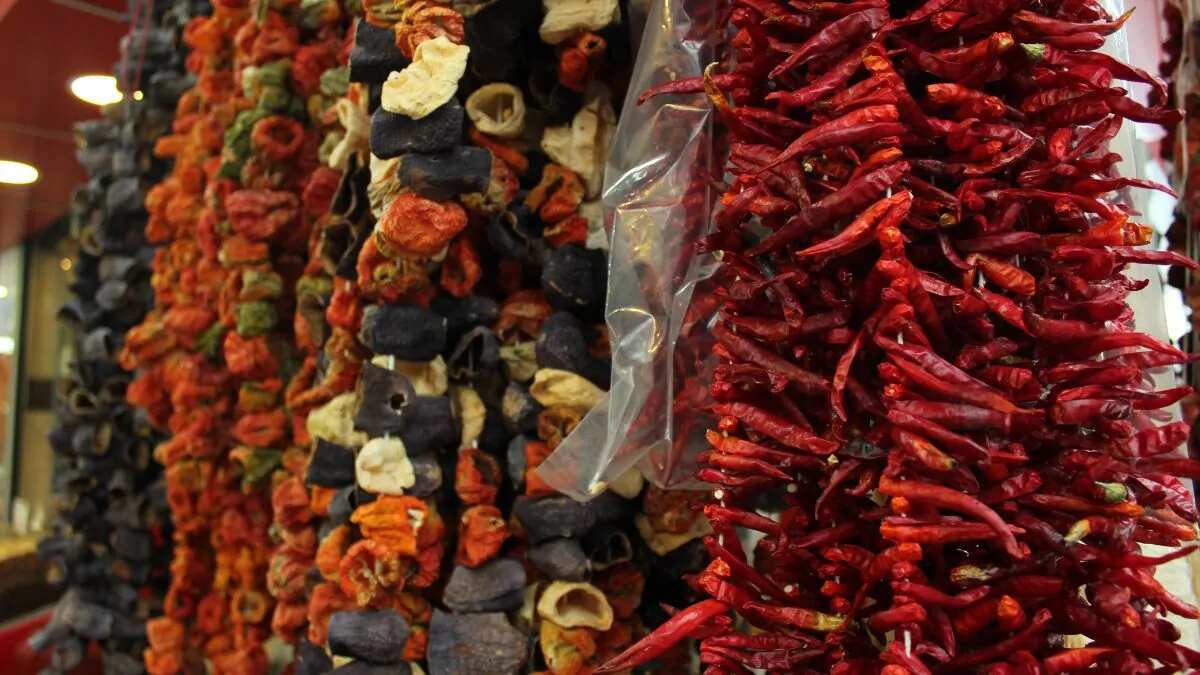
Part of a region’s culinary heritage includes methods that involve being resourceful and combating the need to make up for the unavailability of edible resources during extreme conditions. One such practice - known as hokh syun - is rooted in the valleys of Kashmir, where the biting cold of winters are synonymous with a lack of access to fresh vegetables. Commencing during the summer when the sun is at its peak, the sun-drying technique is a way of bracing for the autumn and eventually the winter - all the while paying ode to nature and its changing seasons, as well as the agrarian roots of communities. Predominantly associated with vegetables, the technique also embraces the dehydration of lean fish and herbs, as well as apples which are mostly cooked with meats, to sustain the cold.
Gogji Are
Image Credits: Wikimedia Commons
Better known as gogji aar - sundried turnips are not just exclusive to Kashmir, but also a widely consumed delicacy across China. In the valley, the fresh root vegetable is washed, peeled and sliced into dense spheres before being hollowed out. The chunks are then strung into ‘garlands’ and left to dry in sun-exposed spaces of local homes, following which they are cooked with tomatoes, cottage cheese or meat to make hearty accompaniments.
Bamchoont Hache
Dried quince apples or bamchoont hache as they are locally known, are believed to intensify in flavour once dehydration. Resembling Italian lemons in their fresh form when in season, the quince apples are sliced thinly before being sundried to a crisp, dull orange colour. Mixed with yoghurt to create homemade delicacies, the dried ingredient is also fried and tossed with spices, or combined with dehydrated eggplant to make flavour-packed vegetarian preparations.
Wangan Hachi
Image Credits: Flickr
Wangun or wangan - the Kashmiri name for eggplant is a delicacy that is sliced lengthwise once dried or into roundels before they transform into what resembles a chip-like appearance. When ready to be eaten, the eggplant is then rehydrated by steeping in water until it swells, as a way to soften it. Locals then prefer to deep-fry the vegetable and serve it alongside tamarind or green gram, or combined with yoghurt to relish as a sauce.
Hoggard
Kashmiri dried fish - also known as hokhe gad - usually refer to a local species of lean fish known as Bolinai. The delicate process of dehydrating seafood involves wrapping fresh fish in cotton towels to help absorb moisture and prevent pest infestations, following which the parcels are exposed to direct sunlight. Like most other dried varieties, the hoggard is known to have a long shelf-life, and is relished best when fried in mustard oil and served with creamy sauces to match. Given how lean protein can tend to be scare during the winters, the dried fish serve as a great source, possessing other nutritional benefits to consumers.
Ruwangan Hachi
Image Credits: Wikimedia Commons
Native Kashmiri tomatoes, which are available all through the month of September in local markets, are halved and dried before being flipped on all sides for even dehydration. These vibrantly red tomatoes, known for their chewy texture and sourness are used in their original form as a side dish or as an accompaniment to paneer or meat. The sundried tomatoes are also powdered to mix into curries or rehydrated to use as the base for gravies in dishes such as the ruwangan hachi chaman.
Handh
Growing in the wild, handh or wild dandelion greens are a leafy vegetable that are dried specifically for consumption. Known to possess several medicinal values, it is often cooked with fish or poultry - or consumed in the form of a saag fortified with chickpeas. The dehydrated greens are boiled until they reach a pasty consistency or stewed on its own before being prescribed to nursing mothers, due to its iron-rich properties. Their bitterness is mellowed as a result of the sun-drying process but it retains a pepperiness that is similar to that of arugula.